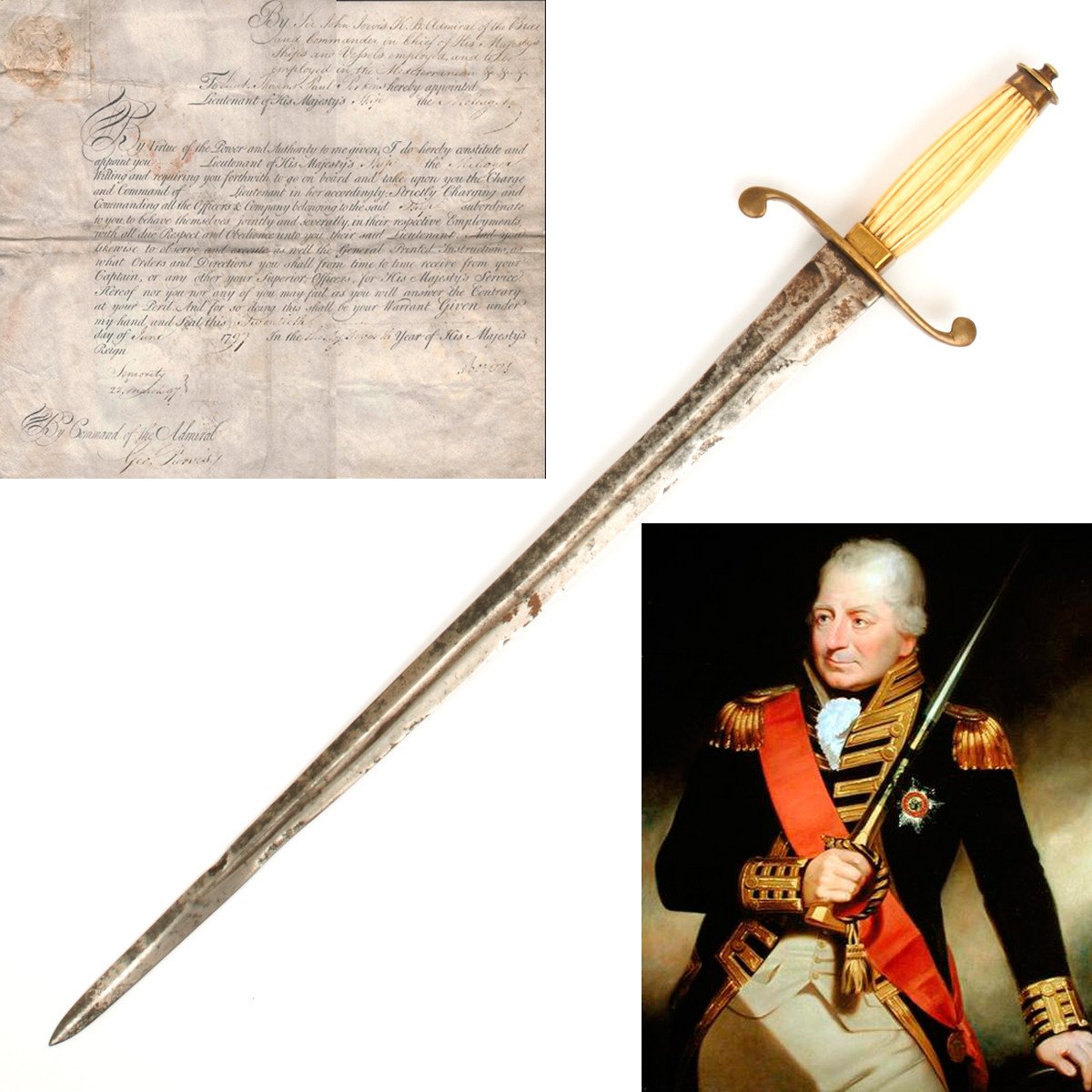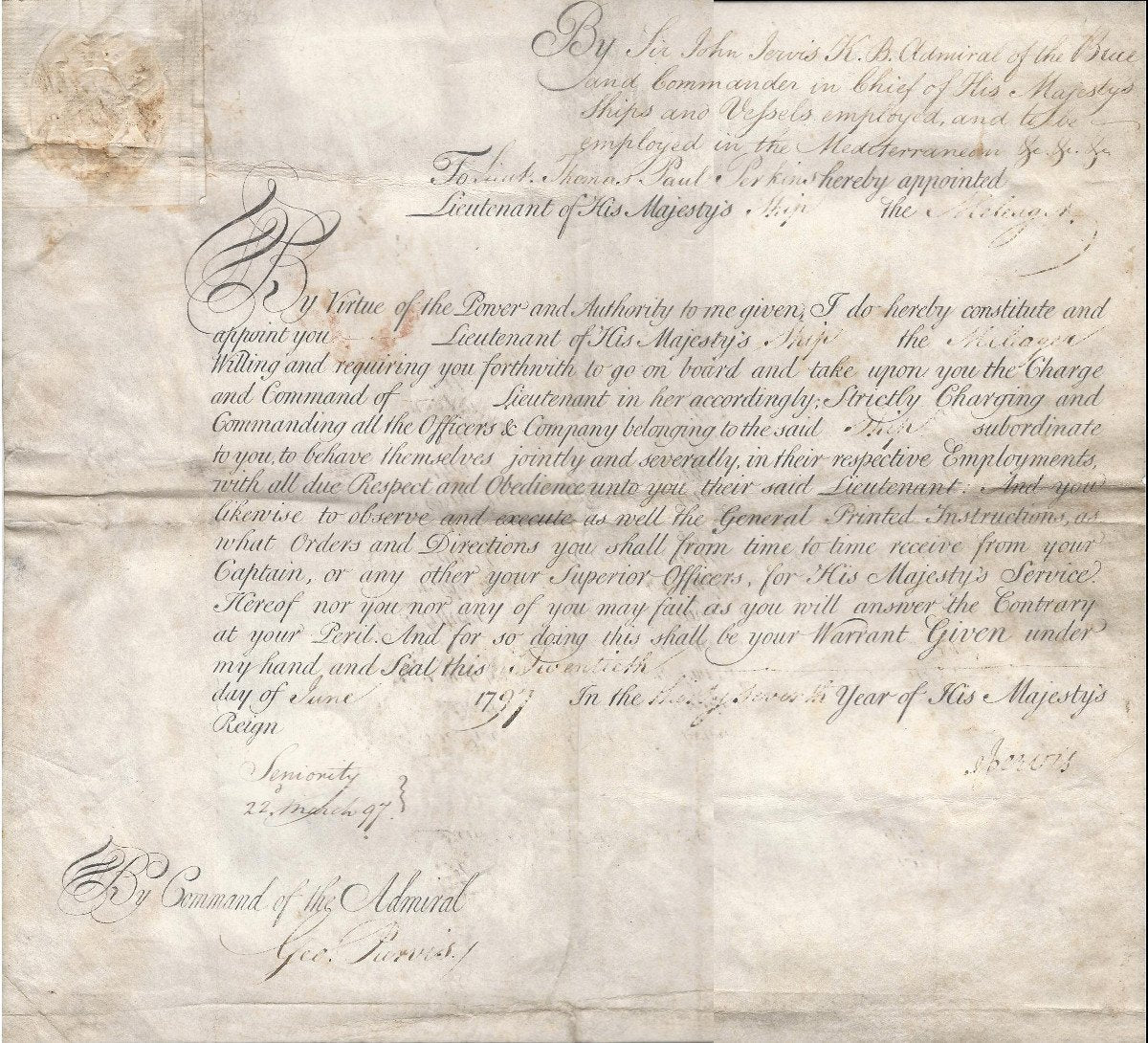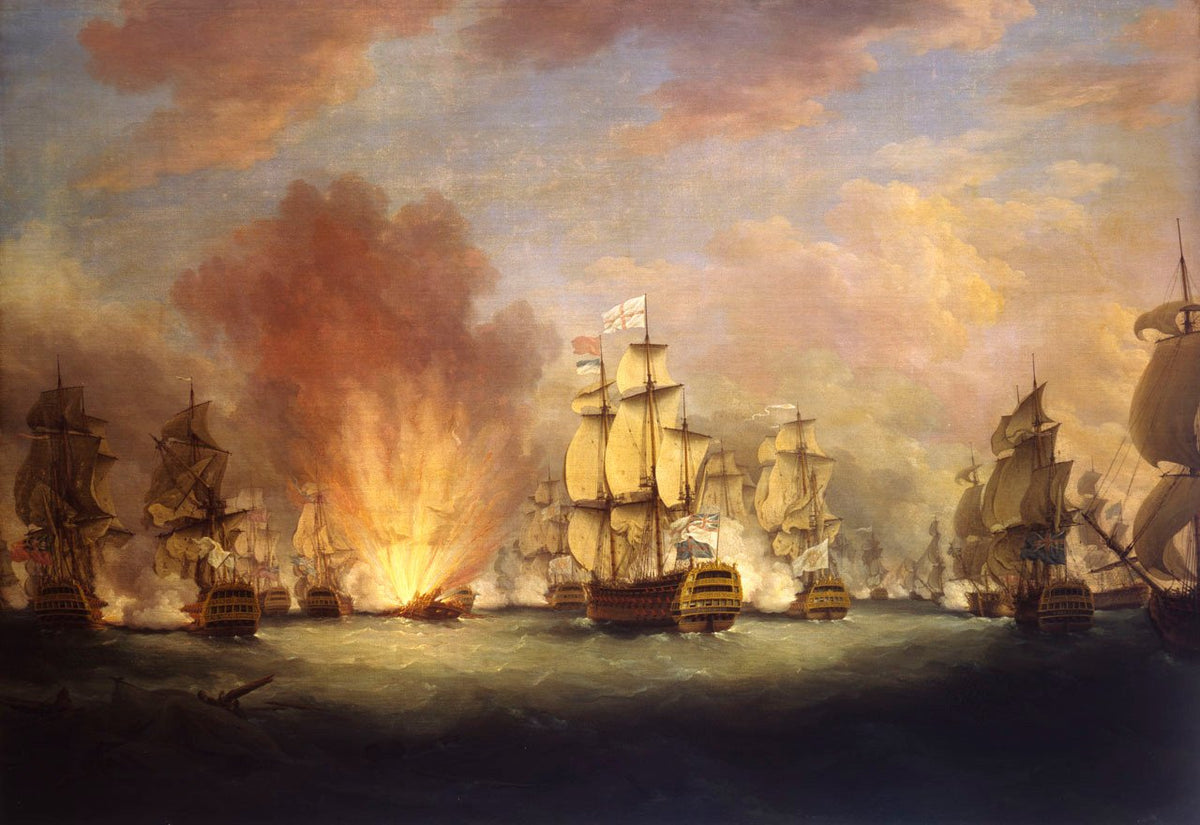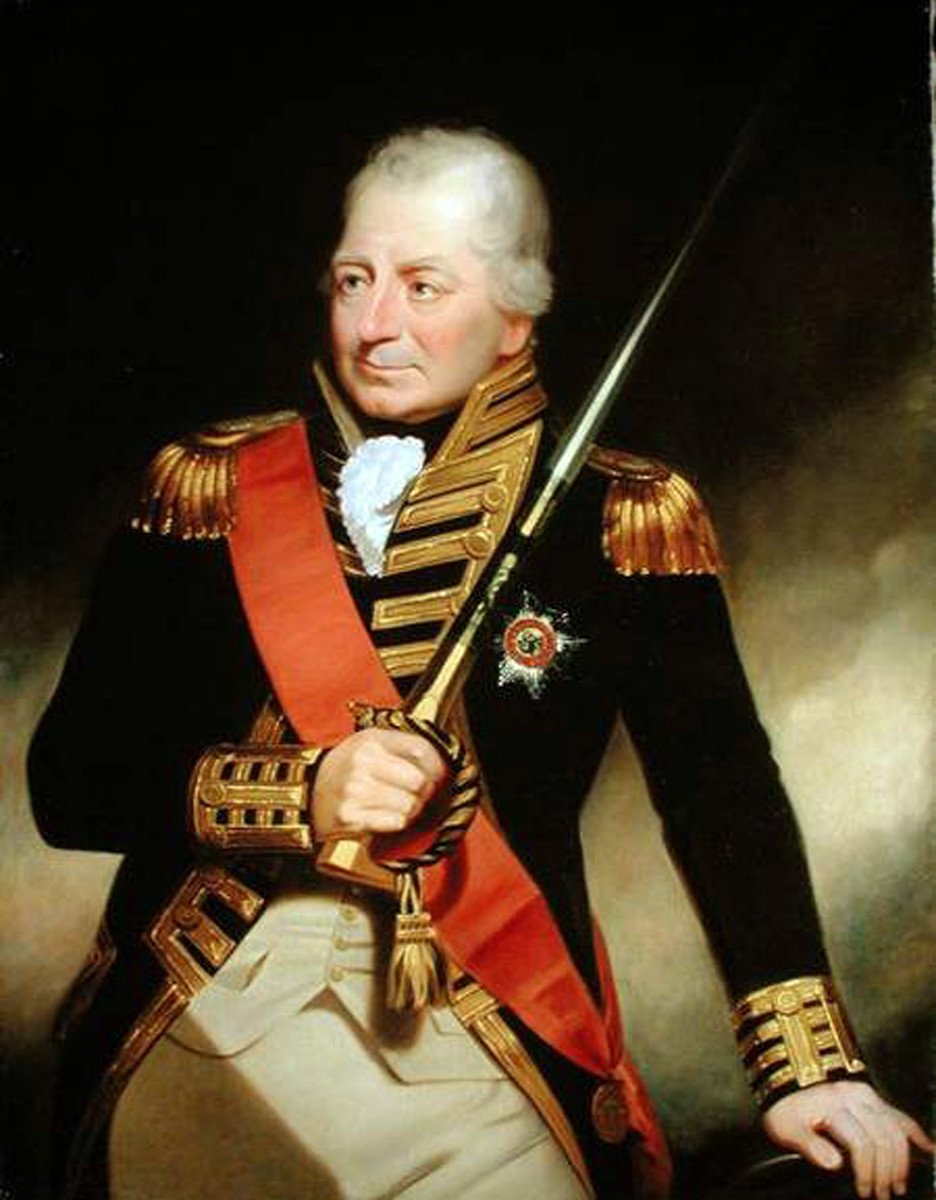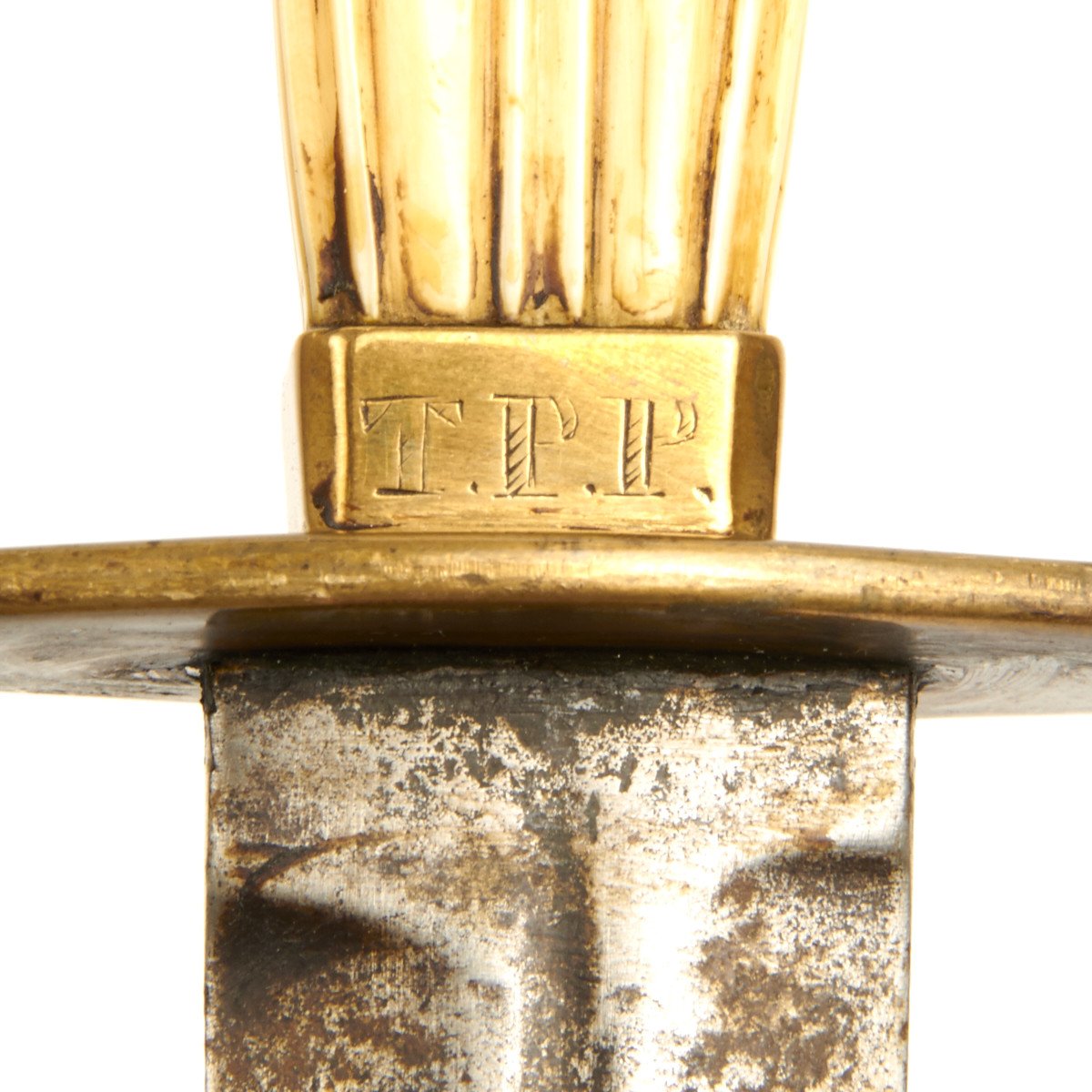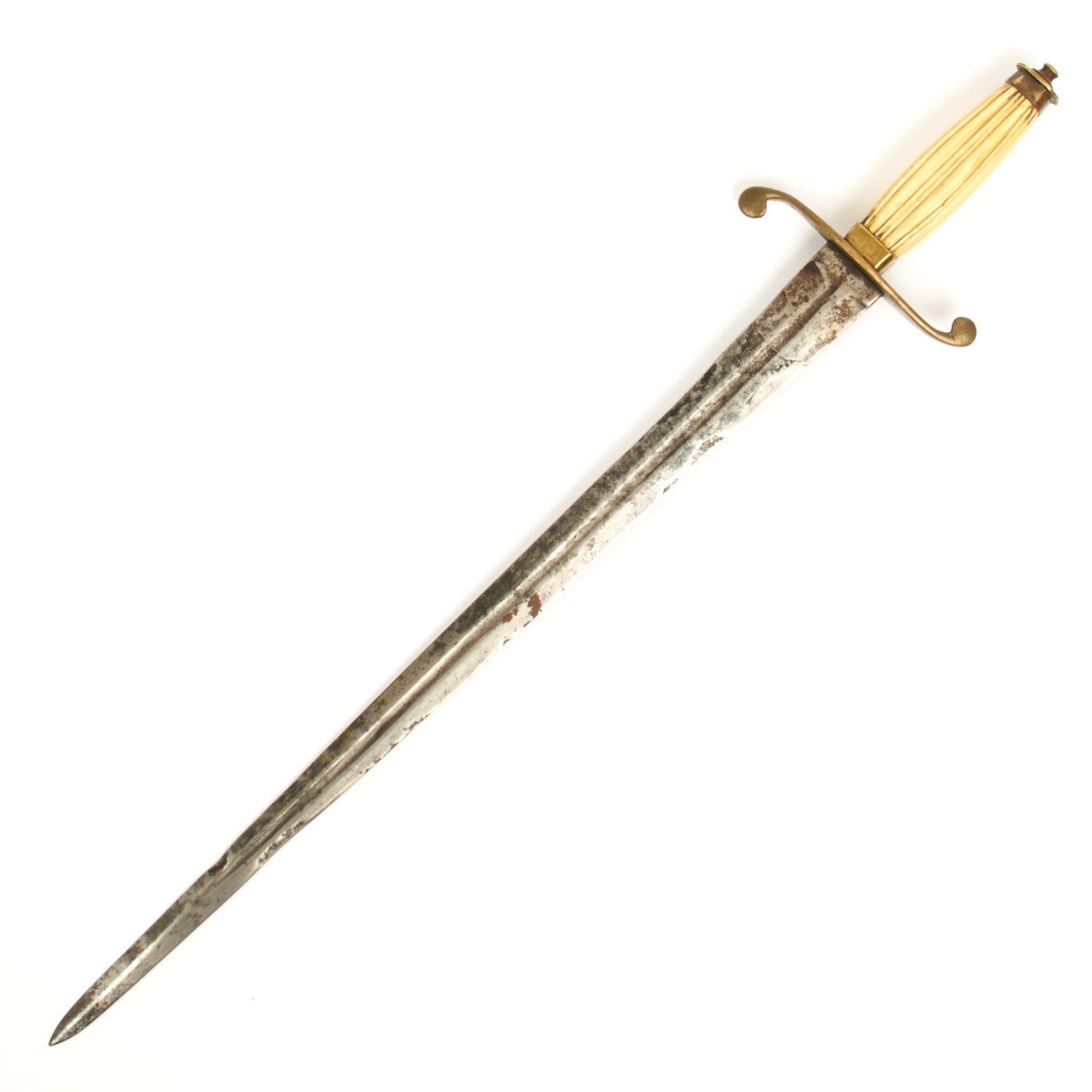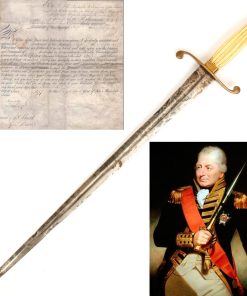Original British Napoleonic Officer Commission with Named Dirk of Lieutenant Thomas Paul Perkins Original Items
$ 2.795,00 $ 698,75
Original Items: One-of-a-kind set. Genuine original naval commission of THOMAS PAUL PERKINS dated June 17th, 1797 signed by Admiral of the Blue JOHN JERVIS, later the famous Earl St. Vincent (1735-1823). The commission appoints Perkins to a Lieutenant aboard the HMS MELEAGER, which was a 32-gun frigate that Greaves and Nickolson built in 1785 at the Quarry House yard in Frindsbury, Kent, England. She served during the French Revolutionary Wars until 1801, when she was wrecked in the Gulf of Mexico.
Perkins then served as a First Lieutenant aboard HMS PHOEBE. HMS Phoebe was a 36-gun fifth rate of the British Royal Navy. She had a career of almost twenty years and fought in the French Revolutionary Wars, the Napoleonic Wars and the War of 1812. Overall, her crews were awarded six clasps to the Naval General Service Medals, with two taking place in the French Revolutionary Wars, three during the Napoleonic Wars and the sixth in the War of 1812. Three of the clasps carried the name Phoebe. During her career, Phoebe sailed to the Mediterranean, the Baltic, the Indian Ocean, South East Asia, North America and South America.
Perkins ended up as British Naval Commander and died in 1815.
HMS PHOEBE at the battle of Trafalgar:
Hindostan arrived at Gibraltar in March and then sailed from there to join Nelson off Toulon in company with Phoebe, but the vessels became separated during a gale in the Gulf of Lyons. Shortly thereafter Hindostan caught fire and was totally destroyed.
On 13 June Phoebe and Amazon made ready to engage two French frigates anchored under the guns of the north-most fort at Toulon. The fort fired at Phoebe, but she was out of range. When the French fleet sortied, the British vessels rejoined their squadron, however the French fleet returned to port without engaging.
On 24 August 1804 Phoebe and Childers captured the Venscab.
HMS Victory was passing the island of Toro on 4 April 1805 when Phoebe brought the news that the French fleet under Admiral Pierre-Charles Villeneuve had escaped from Toulon. While Nelson made for Sicily to see if the French were heading for Egypt, Villeneuve entered Cadiz to link up with the Spanish fleet.
Then, while Nelson was pursuing the French fleet from Toulon to the West Indies, Capel, in Phoebe, was in charge of a small squadron of five frigates and two bomb vessels with the mission of covering Sicily, Sardinia and the route to Egypt.[24] Phoebe joined the blockade of Cadiz later in the summer.
The arrival of the additional frigates Phoebe, Naiad, Sirius, Juno, and Niger off Cadiz allowed Nelson to detach them to disrupt local shipping supplying provisions for the Franco-Spanish Combined Fleet in Cadiz.
In October, the frigate squadron was acting as the eyes of the British fleet. When the Combined Fleet put to sea on 19 October, Phoebe was first in line, followed by Naiad and the third rate Defence. Capel spotted the Combined Fleet’s exit and notified Nelson. As the combined fleet approached the British over the next couple of days, the frigates shadowed it, reporting on its movements.
During the subsequent Battle of Trafalgar, Phoebe relayed Nelson’s signals to the rest of fleet, and remained close to the action although she did not actually engage the enemy. In the gale that followed a few days later the Donegal and Phoebe assisted two of the prizes, the Swiftsure and Bahama, with the result that they were saved.
The commission is accompanied by Perkin’s Midshipman’s Dirk bearing his initials T.P.P. on the forward grip mount. The grip itself is ivory and the blade is 18″ long and shows use, wear and age. Unfortunately the dirk is offered without scabbard.
A wonderfully interesting set with a definite researchable Battle of TRAFALGAR connection.
Fast Shipping with Professional Packaging
Thanks to our longstanding association with UPS FedEx DHL, and other major international carriers, we are able to provide a range of shipping options. Our warehouse staff is expertly trained and will wrap your products according to our exact and precise specifications. Prior to shipping, your goods will be thoroughly examined and securely secured. We ship to thousands clients each day across multiple countries. This shows how we're dedicated to be the largest retailer on the internet. Warehouses and distribution centres can be located throughout Europe as well as the USA.
Note: Orders with more than one item will be assigned a processing date depending on the item.
Before shipping before shipping, we'll conduct a thorough inspection of the items you have ordered. Today, the majority of orders will be delivered within 48 hours. The delivery time will be between 3-7 days.
Returns
The stock is dynamic and we cannot completely manage it because multiple stakeholders are involved, including our factory and warehouse. So the actual stock may alter at any time. It's possible that you may not receive your order once the order has been made.
Our policy is valid for a period of 30 days. If you don't receive the product within 30 days, we are not able to issue a refund or an exchange.
You can only return an item if it is unused and in the same state as the day you received it. You must have the item in its original packaging.
Related products
Uncategorized
Uncategorized
Uncategorized
Uncategorized
Uncategorized
Uncategorized
Uncategorized
Uncategorized
Uncategorized
Armoured Fighting Vehicles of the World: AFVs of World War One (Hardcover Book) New Made Items
Uncategorized
Uncategorized
Band of Brothers ORIGINAL GERMAN WWII Le. F.H. 18 10.5cm ARTILLERY PIECE Original Items
Uncategorized
Uncategorized
Uncategorized
Uncategorized
Uncategorized
Uncategorized
Uncategorized
Australian WWII Owen MK1 Machine Carbine SMG Custom Fabricated Replica with Sling Original Items
Uncategorized
Uncategorized
